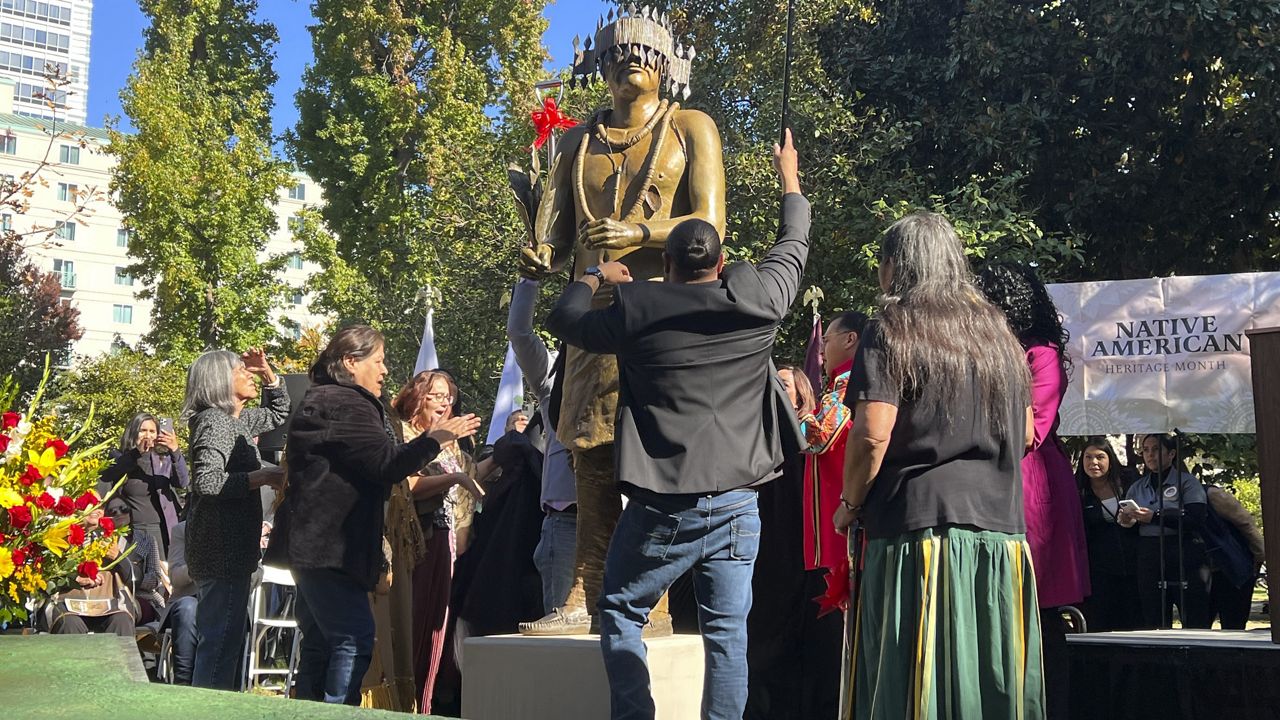LA CAÑADA FLINTRIDGE, Calif. — A quick stroll around Descanso Gardens, and it’s easy to appreciate the glorious work of Mother Nature, but sometimes even she requires a few helping hands.
Take, for instance, the annual Tulip Bloom, one of the garden’s most popular events. Staff and volunteers spent Thursday morning on their knees, tucking close to 30,000 bulbs one by one into their flower bed. Each tulip-to-be had been pre-chilled before being dropped into the hand-dug and composted soil.
“It’s kind of like planting in cake,” horticulturist David Bare said.
But even in ideal conditions, sowing bulbs is back-breaking work.
“I feel pretty achy and old,” Bare admitted, “but when you see it all in bloom, you quickly forget how much it hurt.”
Bare is the director of horticulture at Descanso Gardens, where he’s worked for eight years, but the roots of the annual tulip display go way deeper – back several decades at least. This year’s crop of bulbs arrived from Washington State raring to go, with little green points already sprouting through the tip.
“We call that nosing up,” Bare explained.
The staff rose to the occasion, getting the bulbs underground in record time. Luckily they had help. Last year, the pandemic prevented volunteers from pitching in, but they were welcomed back this year, including Christopher Dixon, who worked as a banker for nearly four decades.
“So not outside much at all,” Dixon chuckled.
Now retired, he tends his rose garden in Glendale and lends his green thumb to Descanso once a week. The work can be hard on his knees, but it’s easy on his soul.
“Things are so fast paced these days,” he said. “I think it’s nice to have some time to garden and reflect on things.”
With some 60 varieties methodically placed in the promenade, the tulips are beautiful and popular but not native. While Bare encourages homeowners to stick to native plants, at Descanso, he says, there’s an extensive native garden that supports local wildlife, allowing him also to plant species that are fun and ornamental without regret.
“It’s an apples and oranges thing for me,” he explained. “I want to have both. I’m in love with plants and I want to have the greatest diversity that I can. But I also respect the environmental conditions that we need to be conscious of all the time.”
While he doesn’t feel guilty about the short-lived frivolity of the tulips — his favorites are the parrot variety with their ruffled and twisted petals — he does make sure to find a use for them once they whither. Each crop is mulched and used to support other garden areas, and a new truckload of tulip bulbs will arrive next year.
January is just the beginning of that cycle. The bulbs planted this week will bloom in February and peak in mid-March. It’s as close to instant gratification and a sure thing that gardening gets, and while an event of this magnitude does require a lot of hard work, Bare rarely complains. Even after all these years, he remains enamored with the tulip bulb’s perfect design.
“They’re just this little dynamic package that‘s ready to go,” Bare said. “There’s an entire plant in there just ready to burst forth and be beautiful.”











